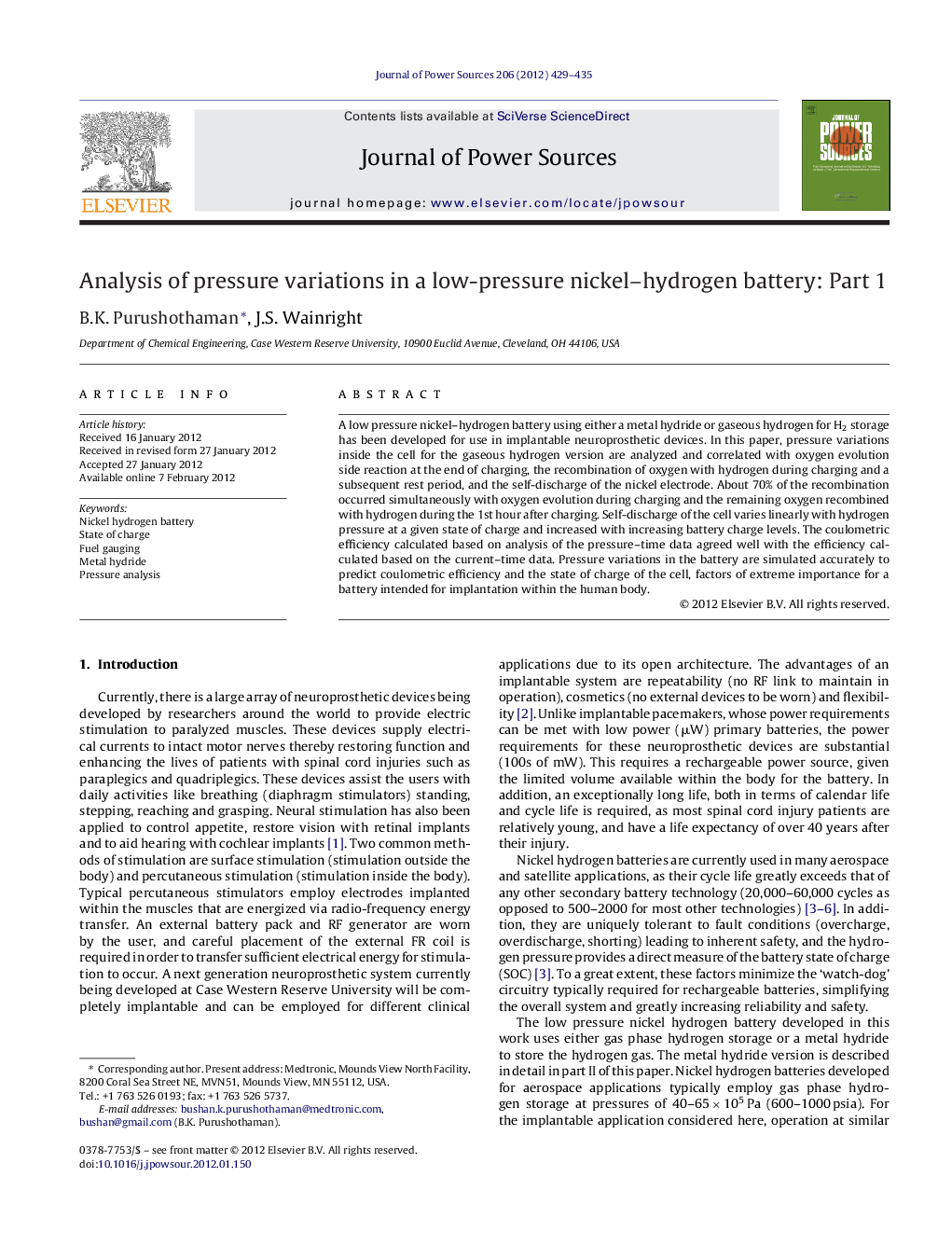| Article ID | Journal | Published Year | Pages | File Type |
|---|---|---|---|---|
| 1293107 | Journal of Power Sources | 2012 | 7 Pages |
A low pressure nickel–hydrogen battery using either a metal hydride or gaseous hydrogen for H2 storage has been developed for use in implantable neuroprosthetic devices. In this paper, pressure variations inside the cell for the gaseous hydrogen version are analyzed and correlated with oxygen evolution side reaction at the end of charging, the recombination of oxygen with hydrogen during charging and a subsequent rest period, and the self-discharge of the nickel electrode. About 70% of the recombination occurred simultaneously with oxygen evolution during charging and the remaining oxygen recombined with hydrogen during the 1st hour after charging. Self-discharge of the cell varies linearly with hydrogen pressure at a given state of charge and increased with increasing battery charge levels. The coulometric efficiency calculated based on analysis of the pressure–time data agreed well with the efficiency calculated based on the current–time data. Pressure variations in the battery are simulated accurately to predict coulometric efficiency and the state of charge of the cell, factors of extreme importance for a battery intended for implantation within the human body.
► Low pressure nickel–hydrogen battery for use in implantable neuroprosthetic device. ► Metal hydride or hydrogen gas used as hydrogen storage at low pressures. ► Pressure variations correlated with O2 evolution, recombination and self discharge. ► State of charge predicted accurately based on pressure variations in the battery. ► Coulometric efficiency based on pressure data agreed well with current–time data.
